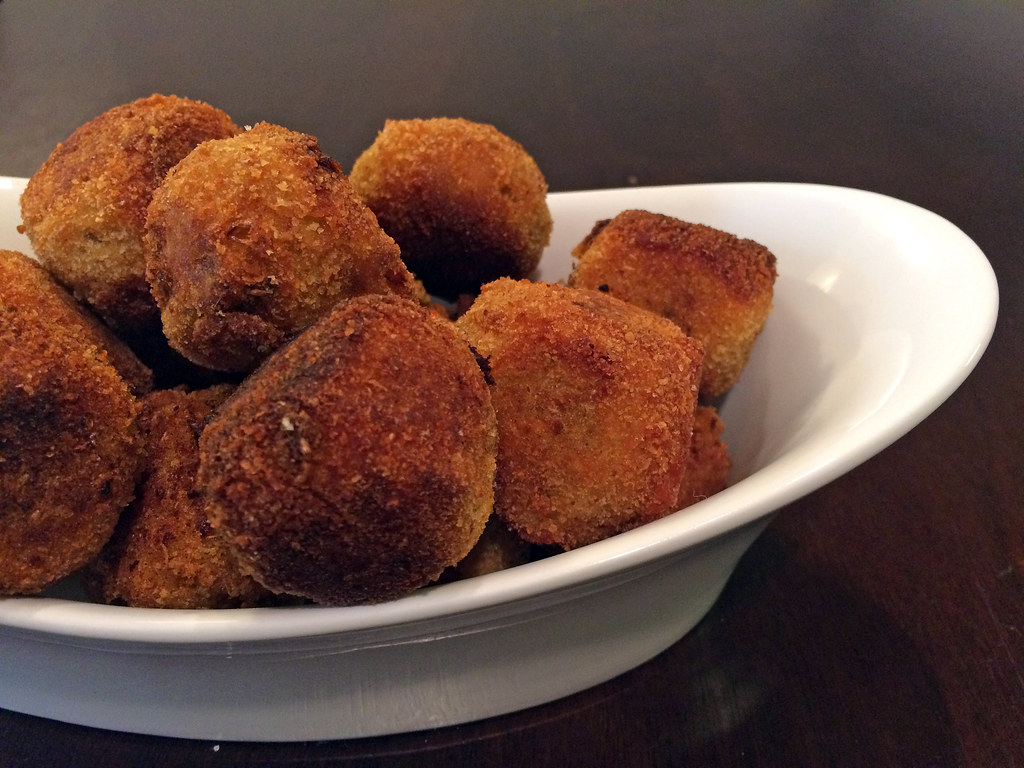“Nothing worth having comes easy,” a wise person once said. I’m pretty sure they were talking about these dumplings.
Spicy, garlicy, and out-of-this-world delicious, these meat-filled dumplings are one of my favorite things to cook and eat. They’re also time consuming to make, but I promise you they’ll be worth it when you find yourself wondering if it’s okay to lick your plate. (Yes. Yes, it is.)
Ingredients:
1 pound ground turkey or chicken
2 tablespoons soy sauce
2 tablespoons vegetable oil
3 green onions, thinly sliced
1 dried shiitake mushroom, soaked until softened, minced
2 teaspoons sesame oil
1 tablespoon cornstarch
30 round dumpling wrappers
4 garlic cloves, minced
1 tablespoon ground pepper
1 1/2 tablespoons sugar
2 tablespoons Chinese black vinegar or balsamic vinegar
2 tablespoons hot bean paste
1 tablespoon hot chile oil
1. For the filling, combine the turkey, 1 tablespoon soy sauce, 1 tablespoon vegetable oil, 1/3 of the green onion, mushroom, 1 teaspoon of the sesame oil, and 1/3 cup water in a bowl. Mix well and freeze for half an hour to firm the mixture to make it easier to handle.
2. Dissolve the cornstarch in 3 tablespoons cold water in a small bowl to make a thin paste. Moisten the edges of a dumpling wrapper by dipping your finger into the paste and running it over the edge of the wrapper. Place about a teaspoon of the filling in the center of the wrapper. Bring the edges of the wrapper up to meet at the top of the filling and pinch them closed, squeezing the dough. Repeat with the remaining filling and wrappers.
3. Bring a large saucepan of water to a boil over high heat. Add the dumplings and cook until the filling is cooked through and the dumplings are floating on top of the water, about 4 minutes.
4. While the dumplings are cooking, make the sauce: heat a wok over high heat. Add the remaining tablespoon of vegetable oil and heat until it shimmers. Add the remaining green onions, garlic, and black pepper. Stir-fry for 30 seconds. Transfer to a bowl and add the sugar, vinegar, hot bean paste, remaining tablespoon soy sauce, remaining teaspoon sesame oil, and hot chili oil. Mix well.
5. Drain the dumplings in a colander. Place the dumplings in a serving bowl and pour the sauce over. Serve warm.





